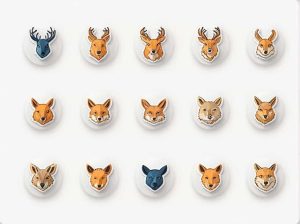In anatomy the terms dorsal and ventral are used to describe positions and orientations of body structures. These terms help scientists medical professionals and students understand the location of organs bones and body parts in both humans and animals.
Simply put dorsal refers to the back or upper side while ventral refers to the front or lower side of an organism. However their exact meaning depends on the type of organism being discussed.
This topic will explore the key differences between dorsal and ventral their usage in different species and why these terms are important in biology and medicine.
Understanding Dorsal and Ventral
What Does Dorsal Mean?
The term dorsal comes from the Latin word dorsum meaning “back.” In anatomical terms dorsal refers to the back side of an organism.
- In humans the dorsal side is the back (spine side).
- In quadrupedal animals (four-legged animals) the dorsal side is the upper side (towards the back).
- In fish the dorsal side is where the dorsal fin is located (top side).
What Does Ventral Mean?
The term ventral comes from the Latin word venter meaning “belly.” In anatomical terms ventral refers to the front or belly side of an organism.
- In humans the ventral side is the front (chest and abdomen).
- In quadrupedal animals the ventral side is the lower side (towards the belly).
- In fish the ventral side is the underbelly.
Key Differences Between Dorsal and Ventral
| Feature | Dorsal | Ventral |
|---|---|---|
| Meaning | Back or upper side | Front or lower side |
| In Humans | Back (spinal region) | Front (chest and abdomen) |
| In Animals | Upper side (back) | Lower side (belly) |
| In Fish | Top side (where the dorsal fin is) | Bottom side (underbelly) |
| Examples | Dorsal fin of a shark human spine | Human stomach belly of a dog |
Dorsal and Ventral in Different Organisms
1. In Humans
In humans dorsal refers to the back side while ventral refers to the front side.
- Dorsal structures: Spine back of the head shoulder blades.
- Ventral structures: Chest abdomen face.
For example if a doctor says “dorsal pain” they mean pain in the back whereas “ventral pain” would refer to pain in the stomach area.
2. In Quadrupedal Animals (Four-Legged Animals)
In animals like dogs cats and horses the dorsal side is the upper part (back) while the ventral side is the lower part (belly).
- Dorsal structures: Backbone top of the head.
- Ventral structures: Belly chest.
If you pet a dog on its back you’re touching its dorsal side. If you rub its belly you’re touching its ventral side.
3. In Fish and Marine Animals
In fish dorsal refers to the upper side where the dorsal fin is located. The ventral side is the bottom or belly of the fish.
- Dorsal structures: Dorsal fin back.
- Ventral structures: Belly gills.
For example sharks have a prominent dorsal fin on their back while their ventral side is typically lighter in color for camouflage.
Why Are Dorsal and Ventral Important?
1. Helps in Medical Examinations
Doctors and healthcare professionals use these terms to describe the locations of injuries surgeries and organ placements.
For example:
- A dorsal incision means a cut on the back.
- A ventral hernia is a hernia that occurs in the abdominal area.
2. Essential in Animal Biology and Zoology
Scientists use dorsal and ventral to classify animal body structures which helps in studying movement evolution and behavior.
For example:
- Many fish have darker dorsal sides and lighter ventral sides for camouflage against predators.
- Insects like beetles have a hard dorsal shell (exoskeleton) that protects them.
3. Important in Neuroanatomy
The terms dorsal and ventral are also used in the study of the nervous system.
- The dorsal side of the spinal cord controls sensory signals.
- The ventral side of the spinal cord controls motor functions.
Common Examples of Dorsal and Ventral in Everyday Life
- The dorsal fin of a dolphin helps it stay stable in water.
- A ventral hernia occurs in the front abdominal wall.
- When a cat lies on its dorsal side it is lying on its back.
- The human dorsal root ganglion is part of the nervous system located in the spinal cord.
The terms dorsal and ventral help describe body orientations in humans animals and marine life.
- Dorsal means back or upper side.
- Ventral means front or lower side.
These anatomical terms are widely used in medicine zoology and everyday language to describe body positions and structures. Understanding them helps in better communication in healthcare biology and even animal care.



